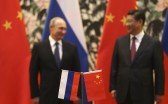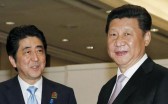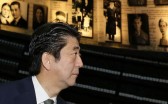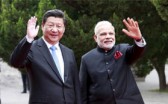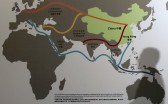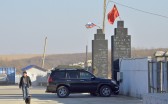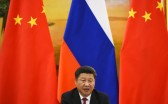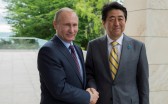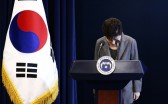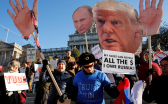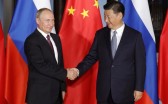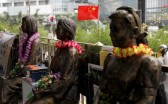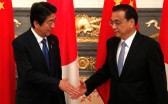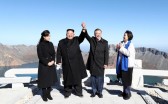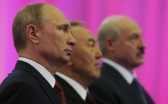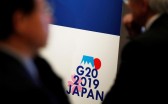Those hoping for progress in historical reconciliation between Japan and South Korea would have been disappointed by Seoul’s recent commemoration of the March 1 independence movement. Such holidays provide moments in which leaders contribute to national narratives about the past: narratives that can help or hinder reconciliation with former adversaries. President Moon Jae-in chose the latter. Despite this, and despite the broader reasons for pessimism about contemporary Japan-ROK relations, in this exchange with Robert Kelly I offer a more optimistic take about the potential for historical reconciliation. As described in my earlier essay, strategic conditions strongly influence the extent to which countries decide to compromise on historical issues; strategic conditions facing Seoul and Tokyo may change such that they are willing to adopt more reconciliatory narratives.
For now, the March 1 observance was yet another reminder of the gulf between the two countries’ memories. South Korean leaders usually deliver their speeches on March 1 at the Sejong Center for the Performing Arts. This year, to observe the 99th anniversary of the independence movement, Moon instead gave his remarks at Seodaemon prison, where the Japanese occupation authorities once detained, tortured, and executed Korean independence activists. In his speech, Moon praised heroes of the independence movement, and referenced the Dokdo/Takeshima island dispute (which leaders have not discussed in these speeches for over a decade). “Dokdo Island is our land that was appropriated first in the process of Japan’s occupation of the Korean Peninsula,” the president said. “It is our indigenous territory. Japan’s current denial of this fact is no different from rejecting self-reflection of the imperialistic invasion.” Moon called for reconciliation with Japan, as long as Tokyo could “squarely face the truth of history and justice.” To move past the “comfort women” issue, Moon argued, “the Japanese Government, the perpetrator, should not say the matter is closed. The issue of a crime against humanity committed in time of war cannot be closed with just a word.”
Moon’s speech—both its setting at Seodaemon and the elements it referenced—fits the toxic pattern described by Kelly in his essay. Japan has a strong victim identity; arguing for a more patriotic history-telling are far-right zealot-patriot-deniers (whom, Kelly observes, make a lot of noise and intimidate many moderates into silence). Evidence of Japanese evasion about the country’s past violence frustrates the many South Koreans who want to see their families’ stories told and are justifiably outraged when they hear prominent intellectuals in Japan deny Japanese guilt and Korean suffering. But Kelly also notes that South Korea sustains a victim identity with a media that embraces “anti-Japanese agit prop,” and leaders who “play the ‘history card’ for quick point-scoring.”
The elements Kelly described create a landscape in which pragmatic Japanese and South Koreans—who see the benefit in cooperation and seek to shift attention away from history—confront a difficult path. The more reasonable Japanese, who understand that their country did awful things in the past and are not adverse to acknowledging that, are increasingly alienated by Seoul’s unremitting and goalpost-moving crusade for Japanese apologies, and by the Chinese Communist Party’s (CPC) self-serving, anti-Japanese domestic propaganda. To put it differently, Japanese progressives and moderates who want to refute far-right denials and advocate for more remembrance of the country’s wartime past find themselves in a highly uncomfortable position. They have to argue, against all available evidence, that this would somehow satisfy Seoul. They would have to argue alongside the anti-Japanese, history-distorting Chinese leadership. South Korean moderates find themselves in a similarly uncomfortable place: as they appeal for a more forward-looking narrative, they would find themselves rhetorically aligned with Japanese rightists who agree that the two countries should move forward—but who chime in with denials, smears of the “comfort women,” and anti-Korean sentiment.
Given this landscape, one might wonder what about the history problem between Seoul and Tokyo is “optimistic”? I share Kelly’s pessimism that historical reconciliation is currently unlikely. However, conditions may change. Many factors contribute to the character of memory after wars—as I and other academics have examined.1 But the strategic need of these countries plays a powerful role: the imperative of cooperation creates a need to reconcile, and a need to rehabilitate the former enemy as an acceptable, trustworthy partner. With this argument I depart from Kelly’s view that “history is the roadblock.” History is indeed standing in the way, but it is the leaders who decide to leave it there or push it aside. According to this view, if Japan and South Korea are searching for allies against a shared security threat, they will move closer together (as they have done during times of perceived US abandonment).2 And as they do so, they will be motivated to create a narrative of mutual respect and shared purpose. My argument is thus optimistic in the sense that that the traumatic history between Japan and South Korea need not inevitably create history problems.
March 1 provides a good example. One might argue that the calendar inexorably comes around to days that provide, as Kelly calls them, “annual provocation opportunities.” While of course March 1 inevitably greets us every year, leaders choose how to remember it. This year, Moon chose to spotlight Japanese violence to a greater degree than seen in recent years. “Remembering” is a conscious choice: leaders have a choice about how and whether to celebrate such dates, or whether to minimize or even forget them. As nineteenth-century author Ernest Renan memorably argued, “forgetting” is essential for unity. In his landmark 1882 lecture, Renan discussed nations that experienced great violence in their formation, and argued that forging national unity required forgetting that violence.3 A similar logic holds for international reconciliation. In any collective effort, Renan argued, “individual members have a great deal in common, and have forgotten many things.” Of course, in cases of international reconciliation, a country need not (and should not) literally forget its past suffering and victims. But to facilitate reconciliation, narratives must downplay memories that evoke animosity toward the former adversary, and must instead emphasize characters, images, and symbols of partnership.
In their handling of World War II’s end, France and West Germany provide a stark contrast to Moon Jae-in’s March 1. In Europe, May 8 – the anniversary of the end of WWII – rolled round every year. But West German governments ignored the date for decades. In the 1950s, “There was no official marking of the occasion, certainly no celebration,” writes scholar Jeffrey Olick.4 The tenth anniversary also quietly slipped by. Only later, in part encouraged by Richard von Weizsäcker’s speech on that date in 1985, Germans forged the narrative that May 8 had been a day of Germany’s “liberation,” and began observing it as such.
Similarly, the French found May 8 an awkward holiday given their postwar cooperation with their wartime enemy. In order to cooperate with West Germany within the European Union and NATO, postwar France embraced a reconciliatory narrative that downplayed divisive themes.5 According to this narrative, the French did not observe May 8, instead emphasizing Armistice Day from WWI (November 11). May 8 was an awkward and complex holiday that President Charles De Gaulle ceased observing (until, with strong domestic protest, it was reinstated). President Valéry Giscard d’Estaing once again ceased public observances in 1975; he suggested celebrating it as a “Day of Europe” and argued that it was time “to turn our thoughts together towards what brings us closer together and what can unite us.”6 Mitterrand resumed celebration of the day after 1981: a task made easier by the German memory of its “liberation.”
Consider an alternative reality of postwar Europe. Imagine West Germans frequently making arguments justifying German aggression and the Holocaust, dismissing French suffering, or arguing that the French had benefited from German occupation. And imagine a French prime minister giving May 8, November 11, or Bastille Day annual speeches at the site of a German atrocity (perhaps Oradour-sur-Glane): recounting French suffering at German hands and highlighting contemporary disputes. And imagine that some French and West Germans favored reconciliation and a less antagonistic narrative but confronted (as Kelly noted of Korea vis-à-vis Japan) “a local code of silence on history” in which political leaders found it too “politically risky” to go against the anti-Germanism “deeply woven” into modern French nationalism. One important reason why this was not the reality in Western Europe related to the strategic environment; a different strategic environment in Asia might alter today’s reality in East Asia as well.
My argument leads me to be more optimistic than Kelly about the need for Seoul and Tokyo to work out a resolution of the “comfort women” issue while the survivors are living. Kelly describes the passing of the elderly survivors as a ticking clock on reconciliation: namely, the two countries need to sort this out while the survivors are alive, or the dispute threatens to settle into what he calls a “permanent feature” of bilateral relations. To be sure, continued denials and acrimony on this issue would indeed be a tragedy from the standpoint of the survivors, who deserve at the very least to have their stories told, and to be spared the addional pain of denials. Continued denials and obfuscation also inhibit the broader advancement of human rights (particularly related to violence against women in wartime, an ongoing tragedy).
At any time, an infinite array of symbols and narratives are available to leaders, perhaps to lie dormant forever, or perhaps to be called into service. Leaders reach for them when it advances their goals to do so. This is neither to claim that leaders fully control national narratives, nor that leaders can freely invent symbols and themes out of thin air.7 However, narratives are broad, making them eminently flexible; so they can adapt depending on a government’s goals. A memory that does not advance a government’s goals today may someday, under different conditions, become more appealing: the characters who populate it may still be living—or may have passed away hundreds of years before.
In China, the “Flying Tigers” are one example. The CCP narrative of Japan’s WWII defeat ignores the Flying Tigers, who were American pilots who flew with the Nationalists against the Japanese. Their story ill-suits the CCP narrative about the war, which celebrates the PLA for its heroic defeat of the Japanese and vilifies the Nationalists. As such, the Flying Tigers are neglected in CCP mythology; rather than being seen as sacred, hundreds of their gravesites lie on a forgotten hillside covered with brush and trash. “Beijing has ignored and underplayed parts of China’s own wartime history,” Austin Ramzy writes, “particularly the contributions of the Nationalist government.”8 But if the Flying Tigers become symbolically useful to the CCP—if, for example, Beijing and Taipei need to create a unifying narrative—the Flying Tigers will be called into service. The CCP will weave their story through speches, textbooks, film, and other media, and will transform the neglected Kunming burial ground into a shrine for national pride.
In short, according to my argument, narratives have no “permanent features,” but rather reflect endless evolution, invention, and re-invention. While today Japan and South Korea’s narratives clash in the many ways Kelly describes, change is possible under different strategic circumstances.
1. Jennifer Lind, Sorry States: Apologies in International Politics (Ithaca, NY: Cornell University Press, 2008); Thomas U. Berger, War, Guilt and World Politics after World War II. Cambridge: Cambridge University Press, 2012); Yinan He, The Search for Reconciliation: Sino-Japanese and German-Polish Relations since World War II (Cambridge: Cambridge University Press, 2009).
2. Victor D. Cha, Alignment Despite Antagonism: The United States-Korea-Japan Security Triangle (Stanford, CA: Stanford University Press, 1999).
3. Ernest Renan, “What is a Nation?,” in Nationalism in Europe (Routledge, 2002): 54-66.
4. Jeffrey K. Olick, “Genre Memories and Memory Genres: A Dialogical Analysis of May 8, 1945 Commemorations in the Federal Republic of Germany,” American Sociological Review Vol. 64, no. 3 (1999): 387.
5. Historians have called France’s eagerness to look forward rather than back a “conspiracy of silence” that privileged reconciliation over a fuller account of wartime history (François 1956). The French narrative de-emphasized the Holocaust and forgot the mistreatment of German soldiers in French POW camps. Though initially ignored by French leaders, these events were later brought to light by critical narratives.
6. Valérie Rosoux, “La réconciliation francoallemande: crédibilité et exemplarité d’un «couple à toute épreuve»?” Cahiers d’histoire. Revue d’histoire critique 100 (2007): 23-36.
7. For insightful discussions see Ronald R. Krebs, Narrative and the Making of US National Security (Cambridge: Cambridge University Press, 2015); Stacie Goddard and Ron Krebs, “Rhetoric, Legitimation, and Grand Strategy,” Security Studies 21, no. 1 (2015): 5-36; Jelena Subotić, “Narrative, Ontological Security, and Foreign Policy Change,” Foreign Policy Analysis 12, no. 4 (2016): 610–627.
8. Austin Ramzy, “Remembering, and Forgetting, the Flying Tigers,” New York Times, October 21, 2013. <

